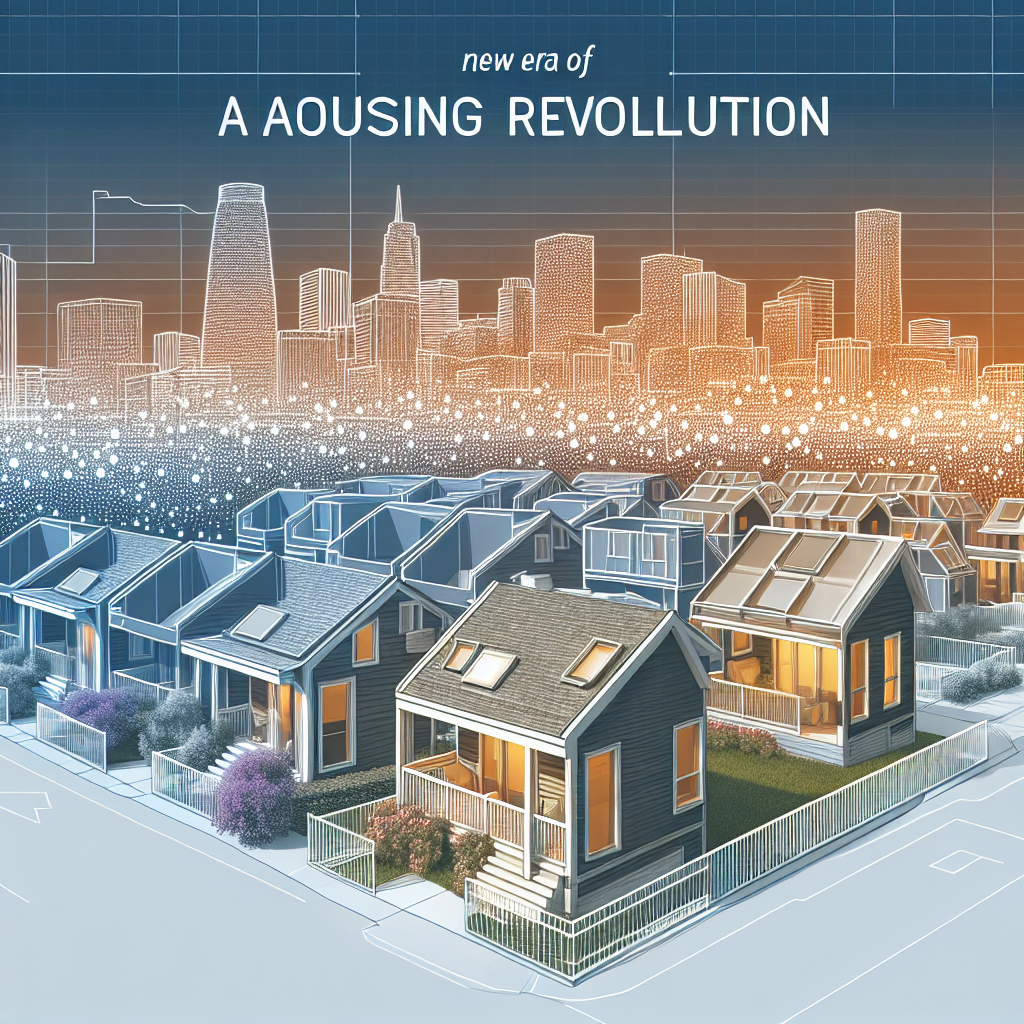-
Table of Contents
- Is California’s ADU Law Ushering in a New Housing Revolution?
- Understanding ADUs: What Are They?
- The Evolution of California’s ADU Law
- The Impact of ADUs on California’s Housing Market
- Increased Housing Supply
- Affordability
- Flexibility and Versatility
- Community and Environmental Benefits
- Case Studies: Success Stories and Challenges
- Los Angeles: A Model for ADU Adoption
- San Francisco: Navigating Challenges
- Statistics: The Growing Popularity of ADUs
- Challenges and Criticisms
- Regulatory Hurdles
- Affordability Concerns
- Infrastructure Strain
- The Future of ADUs in California
- Innovative Solutions
- Community Engagement
- Statewide Coordination
- Conclusion: A New Housing Revolution?
Is California’s ADU Law Ushering in a New Housing Revolution?

California, known for its picturesque landscapes and booming tech industry, is also infamous for its housing crisis. With skyrocketing rents and a shortage of affordable housing, the state has been grappling with how to provide more living spaces for its residents. One of the most promising solutions has been the introduction and expansion of Accessory Dwelling Units (ADUs). But is California’s ADU law truly ushering in a new housing revolution? This article delves into the intricacies of the law, its impact, and whether it holds the key to solving the state’s housing woes.
Understanding ADUs: What Are They?
Accessory Dwelling Units, commonly known as ADUs, are secondary housing units located on the same lot as a primary residence. These units can take various forms, including:
- Detached units: Separate buildings from the main house.
- Attached units: Extensions or additions to the main house.
- Garage conversions: Transforming an existing garage into a living space.
- Basement apartments: Converting a basement into a livable unit.
ADUs are often referred to as granny flats, in-law units, or backyard cottages. They offer a flexible and relatively low-cost way to increase housing availability without the need for new land development.
The Evolution of California’s ADU Law
California’s journey with ADUs began in earnest in 2017 when the state passed a series of laws aimed at making it easier for homeowners to build these units. The legislation was designed to streamline the approval process, reduce fees, and eliminate some of the barriers that had previously made it difficult to construct ADUs. Key milestones in the evolution of California’s ADU law include:
- 2017: Initial laws were passed to simplify the permitting process and reduce fees.
- 2019: Additional legislation was introduced to further ease restrictions, including eliminating owner-occupancy requirements and reducing setback requirements.
- 2020: New laws allowed for multiple ADUs on a single lot and provided more flexibility in terms of size and design.
These legislative changes have significantly increased the number of ADUs being built across the state, offering a glimmer of hope in the fight against the housing crisis.
The Impact of ADUs on California’s Housing Market
The introduction and expansion of ADU laws have had a noticeable impact on California’s housing market. Here are some of the key ways in which ADUs are making a difference:
Increased Housing Supply
One of the most immediate benefits of ADUs is the increase in housing supply. By allowing homeowners to build additional units on their properties, the state has effectively created a new source of housing without the need for new land development. This is particularly important in densely populated urban areas where land is scarce and expensive.
Affordability
ADUs are generally more affordable to build and rent compared to traditional housing units. This makes them an attractive option for both homeowners looking to generate rental income and renters seeking more affordable housing options. According to a study by the Terner Center for Housing Innovation at UC Berkeley, the average cost to build an ADU in California is around $150,000, significantly lower than the cost of constructing a new single-family home.
Flexibility and Versatility
ADUs offer a high degree of flexibility and versatility. They can be used to house family members, provide rental income, or serve as a home office or studio. This flexibility makes them an attractive option for homeowners looking to maximize the utility of their property.
Community and Environmental Benefits
ADUs can also contribute to stronger communities and environmental sustainability. By increasing housing density in existing neighborhoods, ADUs can help reduce urban sprawl and the associated environmental impacts. Additionally, they can foster intergenerational living arrangements, allowing families to stay close together while maintaining their independence.
Case Studies: Success Stories and Challenges
To better understand the impact of California’s ADU law, let’s look at some real-world examples of how these units are being utilized across the state.
Los Angeles: A Model for ADU Adoption
Los Angeles has been at the forefront of ADU adoption in California. The city has streamlined its permitting process and actively promoted the construction of ADUs as a solution to its housing crisis. As a result, the number of ADU permits issued in Los Angeles has skyrocketed, with over 5,000 permits issued in 2019 alone.
One notable success story is the case of a Los Angeles homeowner who converted her detached garage into a 600-square-foot ADU. The unit now serves as a rental property, providing much-needed affordable housing in a high-demand area. The homeowner was able to recoup her investment within a few years through rental income, demonstrating the financial viability of ADUs.
San Francisco: Navigating Challenges
San Francisco, another city grappling with a severe housing shortage, has also embraced ADUs. However, the city has faced some unique challenges, including high construction costs and stringent building codes. Despite these obstacles, San Francisco has made significant progress in promoting ADUs, with over 1,000 units built since the introduction of the new laws.
One example is a San Francisco homeowner who converted her basement into a 400-square-foot ADU. The unit now serves as a rental property, providing affordable housing for a local teacher. While the project faced some initial hurdles, including navigating the city’s complex permitting process, the end result has been a win-win for both the homeowner and the tenant.
Statistics: The Growing Popularity of ADUs
The growing popularity of ADUs in California is evident in the numbers. According to data from the California Department of Housing and Community Development, the state has seen a significant increase in the number of ADU permits issued in recent years:
- 2017: Approximately 5,000 ADU permits issued statewide.
- 2018: Over 10,000 ADU permits issued.
- 2019: Nearly 15,000 ADU permits issued.
- 2020: Over 20,000 ADU permits issued.
This upward trend indicates that more and more homeowners are taking advantage of the new laws to build ADUs, contributing to the overall increase in housing supply.
Challenges and Criticisms
While the expansion of ADUs in California has been largely positive, it is not without its challenges and criticisms. Some of the key issues include:
Regulatory Hurdles
Despite efforts to streamline the permitting process, some homeowners still face regulatory hurdles when trying to build ADUs. These can include complex zoning laws, building codes, and neighborhood opposition. Addressing these challenges will be crucial to ensuring the continued success of ADUs.
Affordability Concerns
While ADUs are generally more affordable than traditional housing units, there are concerns that they may not be accessible to all residents. The cost of construction, coupled with rising property values, can make it difficult for lower-income homeowners to build ADUs. Additionally, there is a risk that ADUs could contribute to gentrification in some neighborhoods, displacing long-time residents.
Infrastructure Strain
Increasing housing density through ADUs can put a strain on existing infrastructure, including roads, utilities, and public services. Ensuring that communities have the necessary infrastructure to support additional residents will be essential to the long-term success of ADUs.
The Future of ADUs in California
Despite these challenges, the future of ADUs in California looks promising. The state continues to refine its laws and policies to make it easier for homeowners to build these units, and there is growing recognition of the role that ADUs can play in addressing the housing crisis.
Innovative Solutions
Innovative solutions are emerging to address some of the challenges associated with ADUs. For example, some cities are exploring pre-approved ADU designs to simplify the permitting process and reduce costs. Additionally, there are efforts to provide financial assistance to lower-income homeowners to help them build ADUs.
Community Engagement
Engaging communities in the planning and development of ADUs will be crucial to their success. By involving residents in the decision-making process and addressing their concerns, cities can build support for ADUs and ensure that they are integrated into neighborhoods in a way that benefits everyone.
Statewide Coordination
Statewide coordination and support will also be essential. By providing clear guidelines and resources, the state can help ensure that all communities have the tools they need to successfully implement ADU policies.
Conclusion: A New Housing Revolution?
California’s ADU law represents a significant step forward in addressing the state’s housing crisis. By making it easier for homeowners to build additional units on their properties, the state has created a new source of housing that is flexible, affordable, and environmentally sustainable. While there are challenges to overcome, the growing popularity of ADUs and the innovative solutions being developed suggest that they have the potential to play a key role in a new housing revolution.
As more homeowners take advantage of the opportunities provided by ADUs, and as cities and the state continue to refine their policies, there is hope that California can make significant progress in providing the housing its residents so desperately need. The success of ADUs in California could serve as a model for other states facing similar housing challenges, demonstrating that with the right policies and support, it is possible to create more affordable and sustainable housing for all.








